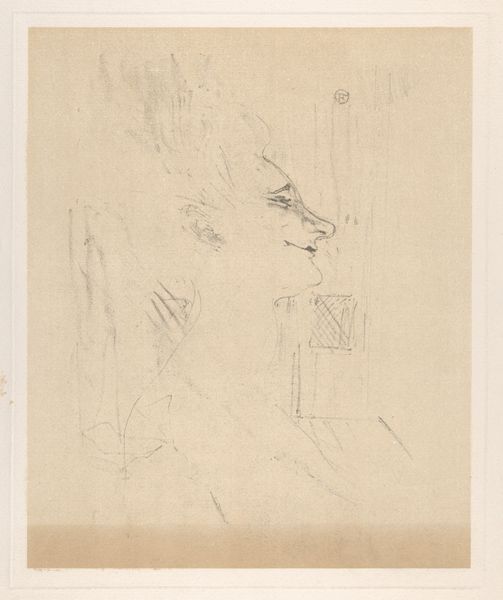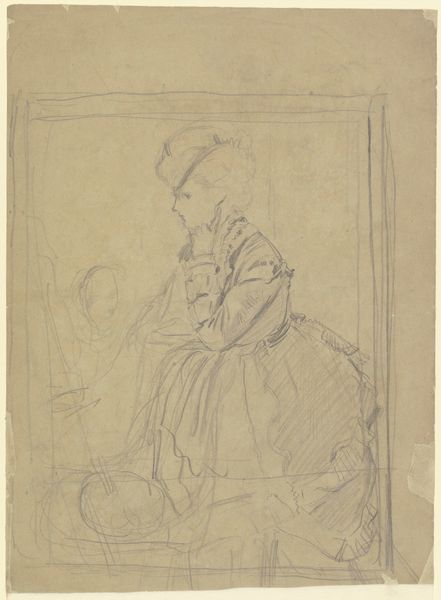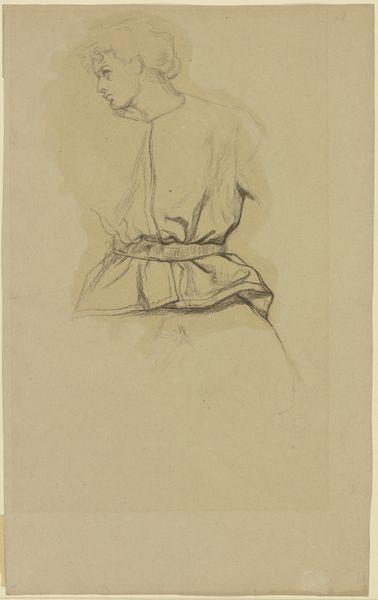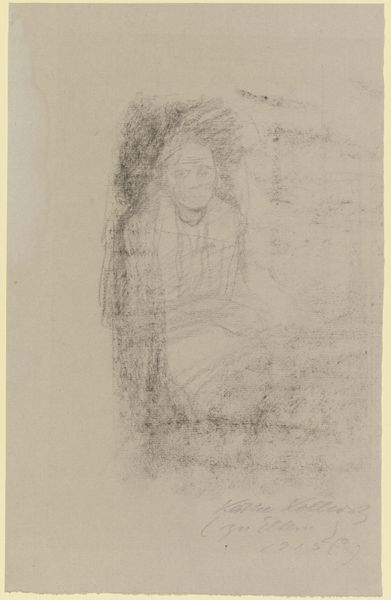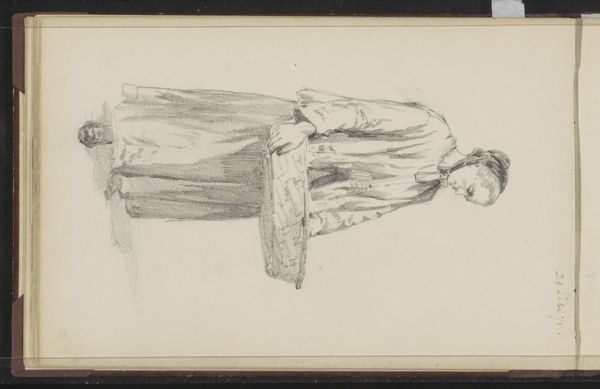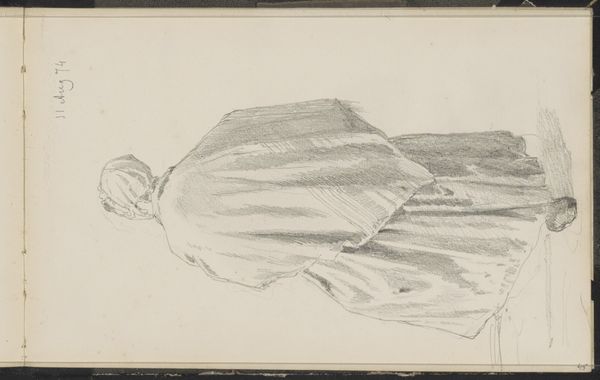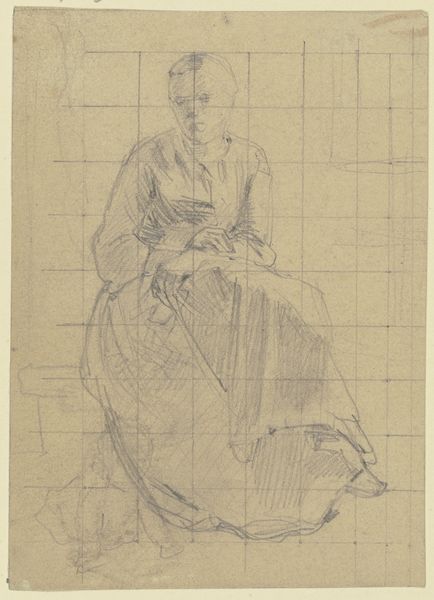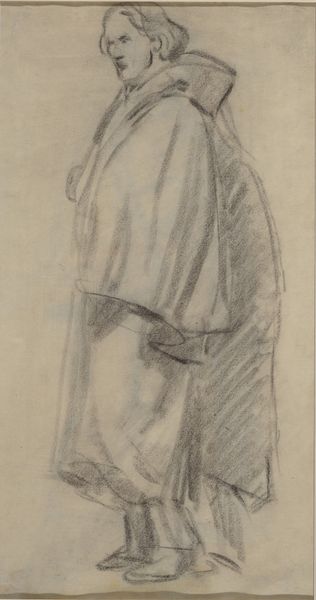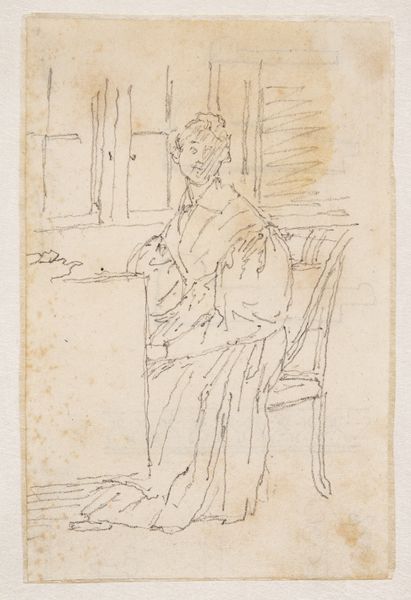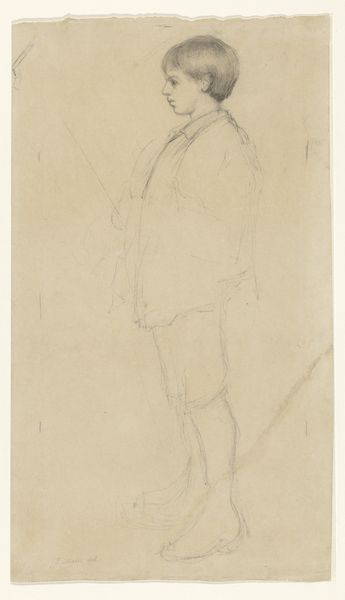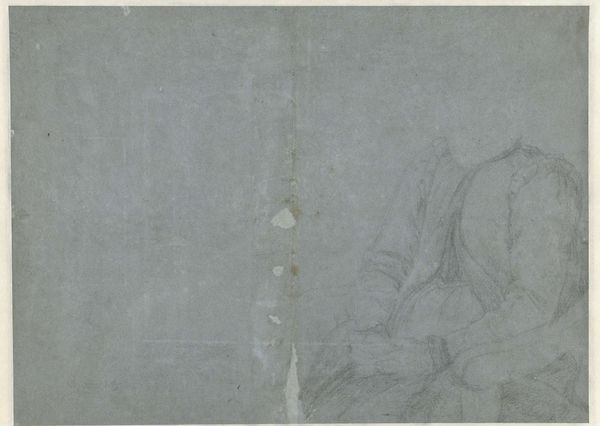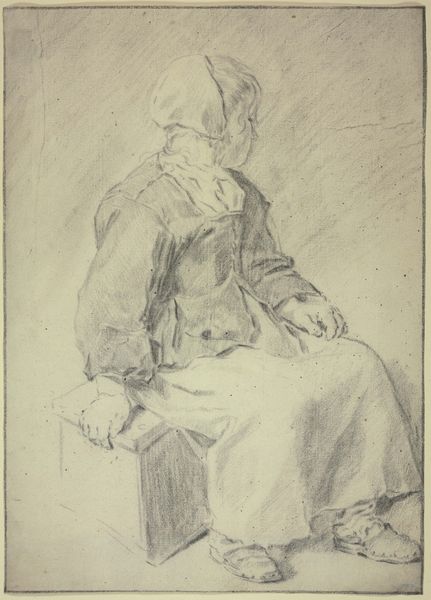
Profilbillede i hel figur, hovedet dog en face, af kunstnerens anden hustru, som frugtsommelig 1803 - 1809
0:00
0:00
drawing, pencil
#
portrait
#
drawing
#
figuration
#
romanticism
#
pencil
Dimensions: 378 mm (height) x 267 mm (width) (bladmaal)
Curator: I find this work particularly arresting. It's a pencil drawing by Nicolai Abildgaard, dating from around 1803 to 1809. The title is "Profile Image in Full Figure, Head in Front View, of the Artist's Second Wife, Pregnant." Editor: The immediate impression is quite delicate, almost ephemeral. The wispy lines create a sense of lightness despite the subject matter of pregnancy, which one might associate with a certain groundedness. Curator: Indeed, and it's interesting to consider the Romantic context here. Abildgaard, though rooted in Neoclassicism, embraces a certain emotional expressiveness through this intimate portrait of his wife. One can almost sense the labor involved in its creation— the patient, repetitive strokes of the pencil. Editor: Absolutely. Her classical garb drapes loosely, subtly revealing and concealing, hinting at the life she carries. I wonder, too, about the choice of a drawing, not a painting. Is it a more personal, private representation? The period marked considerable instability for women in domestic and political roles in much of Europe, how much can we ascribe to this piece being indicative of societal norms and pressure? Curator: The medium likely speaks to access to materials during that time, paper and pencil were cheaper and more readily available than canvas and oils. Drawing also allows for a certain immediacy. The visible lines suggest an active process, almost as if we’re witnessing the work unfold. Editor: I see what you mean, though I also feel the incomplete nature suggests fragility, vulnerability, even, as the world shifts drastically with a turn in the century. Pregnancy then, held even more precarious realities. Curator: A fair assessment, which brings to bear interesting points for contemporary intersectional theories. Regardless, one can discern Abildgaard’s affection and admiration for his subject in these deft strokes, rendering visible both the tangible and the intangible, labor and hope. Editor: A captivating example of how materials, artistic touch, and historical circumstances can intertwine. Thank you for pointing out so many subtleties in what at first appeared to be an unassuming work.
Comments
No comments
Be the first to comment and join the conversation on the ultimate creative platform.
